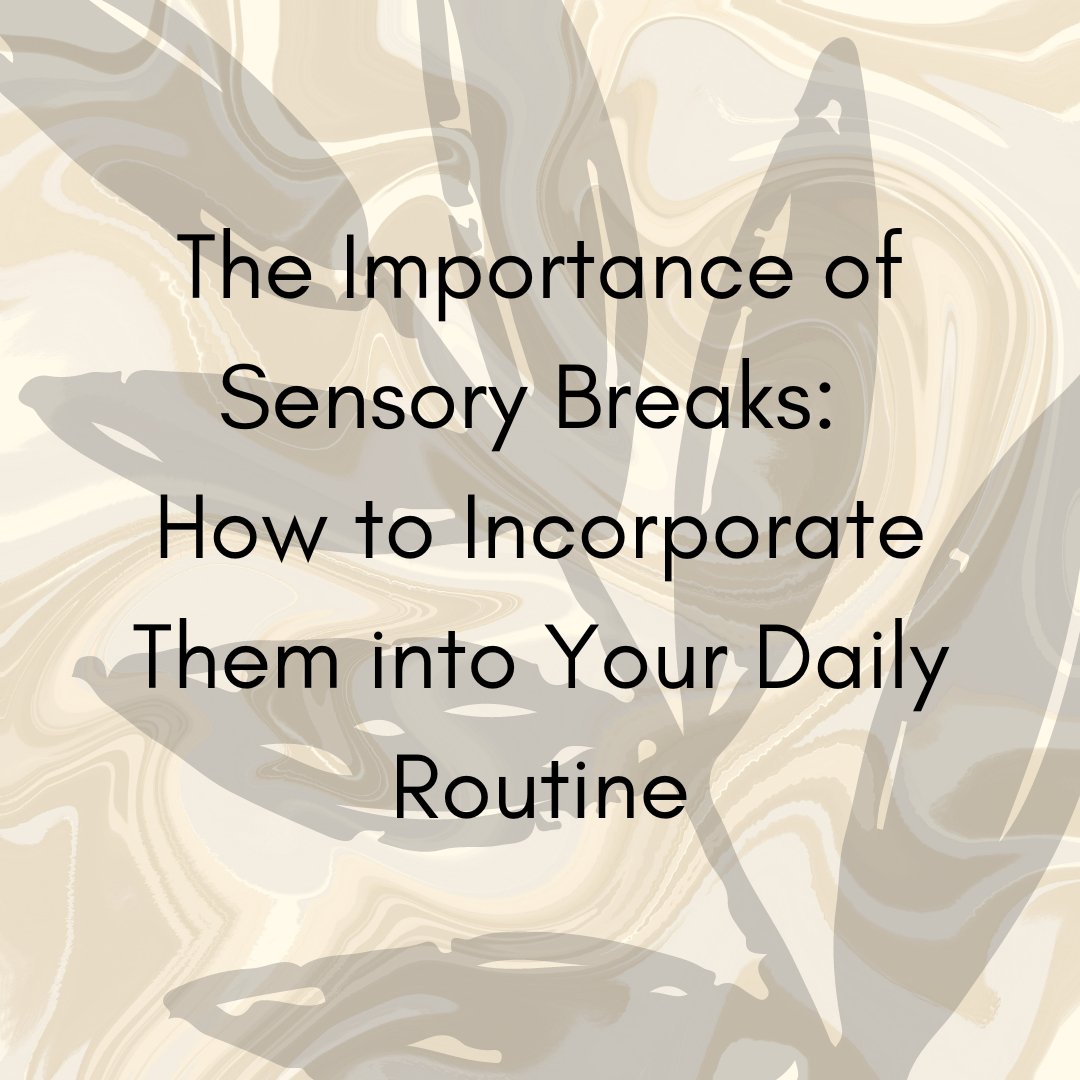
The Importance of Sensory Breaks: How to Incorporate Them into Your Daily Routine
Share
In today's fast-paced world, it’s easy to feel overwhelmed by the constant barrage of sensory input. Whether it's the hum of a crowded office, the glare of bright screens, or the chaos of a busy household, our senses are constantly being stimulated. For individuals with sensory processing challenges, such as those with autism, ADHD, or anxiety, this can lead to feelings of stress, overwhelm, and even burnout.
One way to manage sensory overload is through sensory breaks—short, intentional intervals throughout the day that allow you to step back, reset, and manage your sensory input. Sensory breaks can be a simple yet powerful tool to help you maintain focus, reduce anxiety, and improve emotional regulation. In this post, we’ll explore why sensory breaks are essential and how you can easily incorporate them into your daily routine.
Why Are Sensory Breaks Important?
Sensory breaks are crucial because they give the brain a chance to rest and recalibrate from the constant input it receives. For individuals who are particularly sensitive to sensory stimuli, taking time to pause and regulate can prevent feelings of overwhelm or shutdown.
Without these breaks, sensory overload can lead to increased stress, difficulty concentrating, irritability, and fatigue. Incorporating sensory breaks into your daily routine can help improve focus, productivity, and emotional well-being by creating moments of calm and balance.
How to Incorporate Sensory Breaks into Your Routine
Here are some simple ways to introduce sensory breaks into your day:
-
Start Your Day with a Sensory Check-In Begin each day by tuning into your body and mind. Take a few deep breaths and assess how you’re feeling. Are you anxious? Tired? Overstimulated? This simple check-in can help you identify when you might need sensory breaks throughout the day. Consider using grounding techniques, like holding a calming object or engaging with a textured item like a stress ball or fidget toy.
-
Schedule Sensory Breaks During Work If you work in a stimulating environment, sensory breaks can be a lifesaver. Set a reminder to take a short break every 60-90 minutes. During this time, step away from your desk, stretch, and engage with a sensory tool that helps you reset—whether it’s squeezing a fidget toy, taking deep breaths, or using a weighted lap pad to provide calming pressure. Noise-canceling headphones can also help block out distractions and offer a moment of quiet.
-
Create a Sensory-Friendly Space at Home Having a designated sensory-friendly space in your home is a great way to encourage regular sensory breaks. This space could include calming lighting, soft textures, and your favorite sensory items like weighted blankets or aromatherapy diffusers. Make it a habit to retreat to this space when you feel overwhelmed or need to decompress.
-
Incorporate Sensory Breaks into Social Situations Social situations can be overwhelming for those with sensory processing needs. If you’re attending an event or spending time in a busy environment, plan for short sensory breaks where you can step away for a few minutes to recalibrate. Carry portable sensory tools like chewable jewelry or sensory putty to help you stay grounded during these interactions.
-
End the Day with Sensory Relaxation After a long day of sensory input, it’s essential to unwind and prepare for rest. Incorporate sensory-friendly activities like a warm bath, gentle stretches, or time spent with a weighted blanket to relax your body and mind. This end-of-day ritual can help you transition into a peaceful night’s sleep.
Sensory Tools That Can Help
At Sensory Haven, we offer a variety of sensory tools designed to support your sensory breaks. Here are some products that can enhance your sensory break routine:
- Weighted Blankets: Ideal for providing deep pressure stimulation, which can help reduce anxiety and promote relaxation.
- Fidget Spinners and Stress Balls: Great for staying focused and releasing nervous energy during short breaks.
- Noise-Canceling Headphones: Perfect for creating a quiet, distraction-free environment during sensory overload.
- Chewable Jewelry: A discreet tool for oral sensory input, helping manage stress in social situations.
- Aromatherapy Diffusers: Use calming scents like lavender or chamomile to create a soothing sensory space.
Final Thoughts
Incorporating sensory breaks into your daily routine can make a world of difference in managing sensory overload, reducing stress, and promoting overall well-being. Whether at work, home, or in social settings, taking time to pause and reset is essential for maintaining balance and focus throughout the day.
At Sensory Haven, we’re committed to helping you create sensory-friendly spaces and routines that support your mental and emotional health. Explore our range of sensory tools to find the perfect items to enhance your sensory breaks and improve your daily life.
